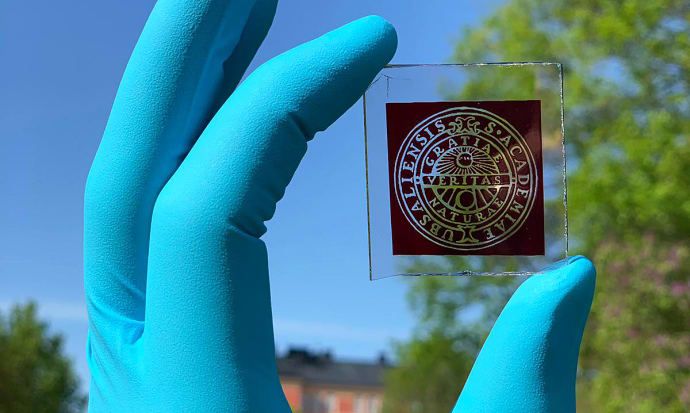A research team from Sweden’s Uppsala University, Germany’s Technical University of Munich and UK's Newcastle University has developed a new organic dye-sensitized solar cell with efficiencies reportedly ranging from 31.4% to 34%.
The new device, described as an ambient light harvester, was conceived for use in self-powered ‘internet of things' devices. The cell, based on a copper iodide-complex called copper(II/I), was manufactured through a new co-sensitization strategy.
The copper iodide electrolyte was vacuum-injected through a hole in the counter electrode, which is an electrode traditionally used to close the current circuit in an electrochemical cell. This electrode was then sealed with thermoplastic film and a glass coverslip, in a ‘sandwich-like layout', and the cell was left to dry in an ambient atmosphere for 72–96 hours.
The performance of the device was measured under ambient lighting with an OSRAM 930 18 W fluorescent tube. The researcher said the cell generated 103.1 microwatts per square centimeter (μW cm−2), corresponding to a 34.0% power conversion efficiency, which they claim is the highest for any organic dye-sensitized PV device of this kind. For comparison, conventional dye-sensitized solar cells have achieved efficiencies ranging from 10% to 14, though these are achieved on cells with much larger surface areas.
At lower light intensities, the proposed cell generated 49.5 and 19.0 μW cm−2 and achieved efficiencies of 32.7% and 31.4%, respectively. “The dye-sensitized solar cell showed stable power outputs beyond evaporation of the electrolyte,” the scientists said.
Popular content
The solar cell, described in the paper Dye-sensitized solar cells under ambient light powering machine learning: towards autonomous smart sensors for the internet of things, published in Chemical Science, was tested in a prototype of a fully self-powered intelligent internet of things node inferring information based on a pre-trained artificial neural network.
The researchers claim the cell is able to provide enough electricity from ambient light to power a node capable of sensing and communicating data within a wireless network even during long period of darkness. A paper published last year by Massachusetts Institute of Technology estimates the market for such devices could surpass $1 billion annually by the mid-2020s.
This content is protected by copyright and may not be reused. If you want to cooperate with us and would like to reuse some of our content, please contact: editors@pv-magazine.com.



1 comment
By submitting this form you agree to pv magazine using your data for the purposes of publishing your comment.
Your personal data will only be disclosed or otherwise transmitted to third parties for the purposes of spam filtering or if this is necessary for technical maintenance of the website. Any other transfer to third parties will not take place unless this is justified on the basis of applicable data protection regulations or if pv magazine is legally obliged to do so.
You may revoke this consent at any time with effect for the future, in which case your personal data will be deleted immediately. Otherwise, your data will be deleted if pv magazine has processed your request or the purpose of data storage is fulfilled.
Further information on data privacy can be found in our Data Protection Policy.